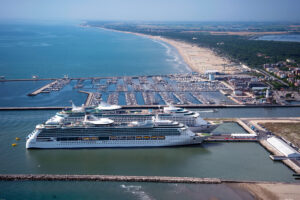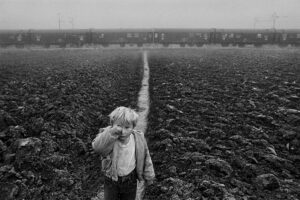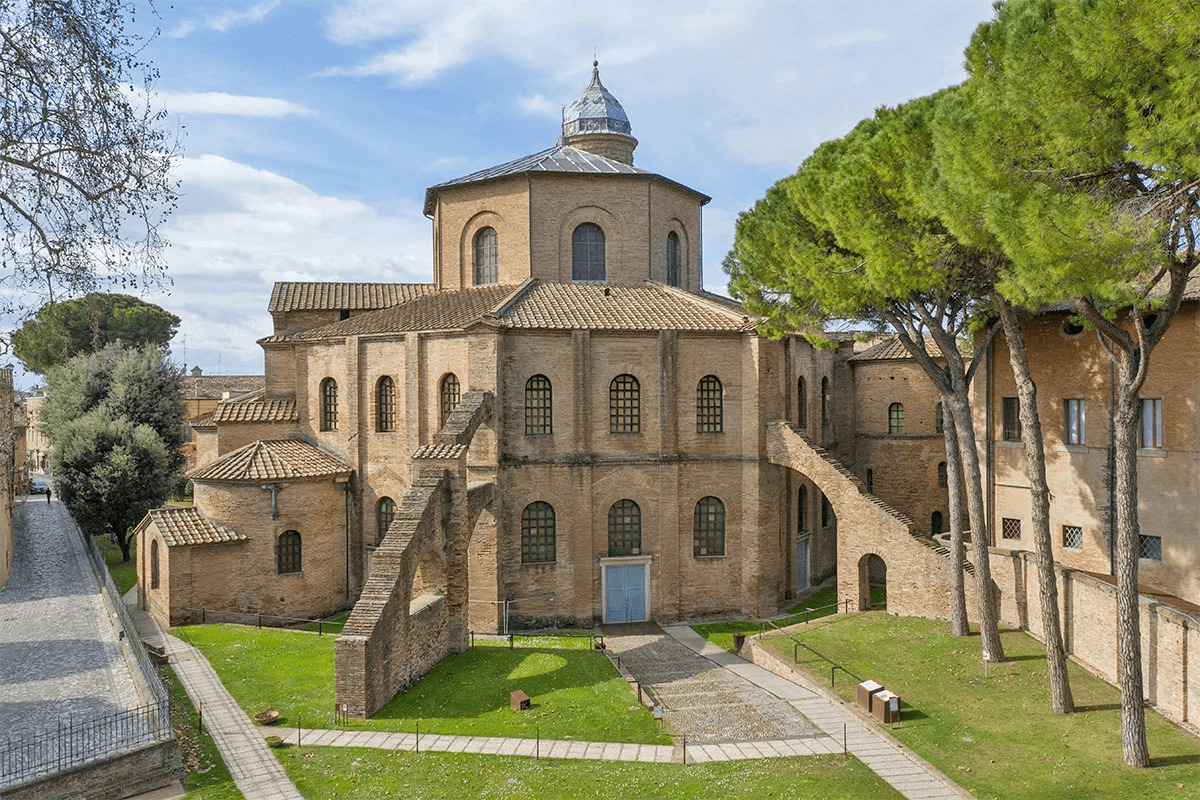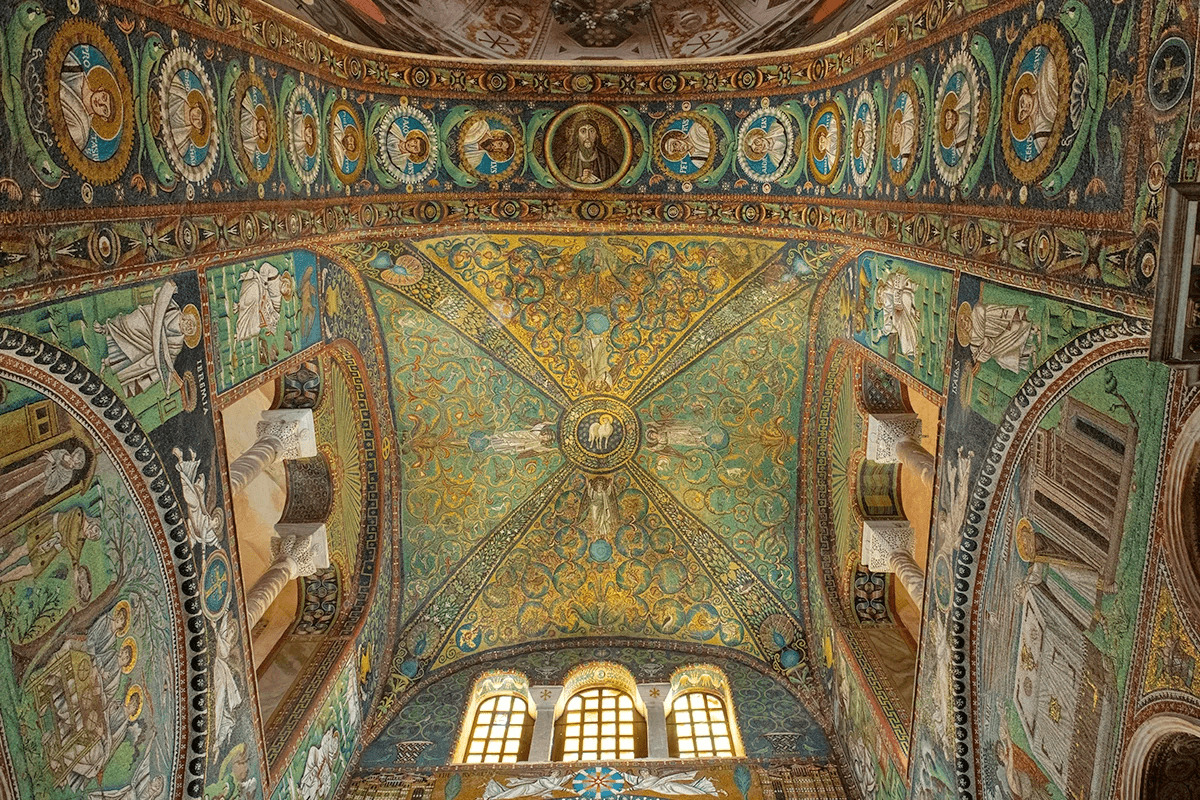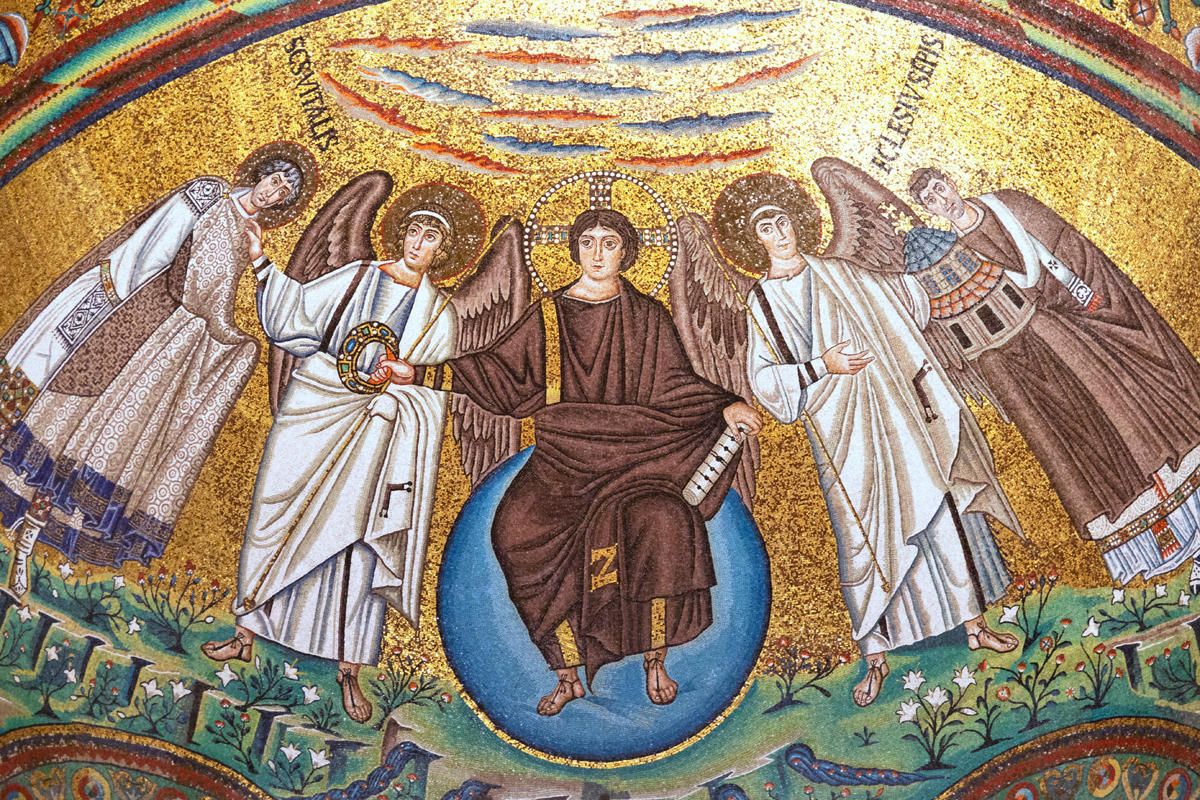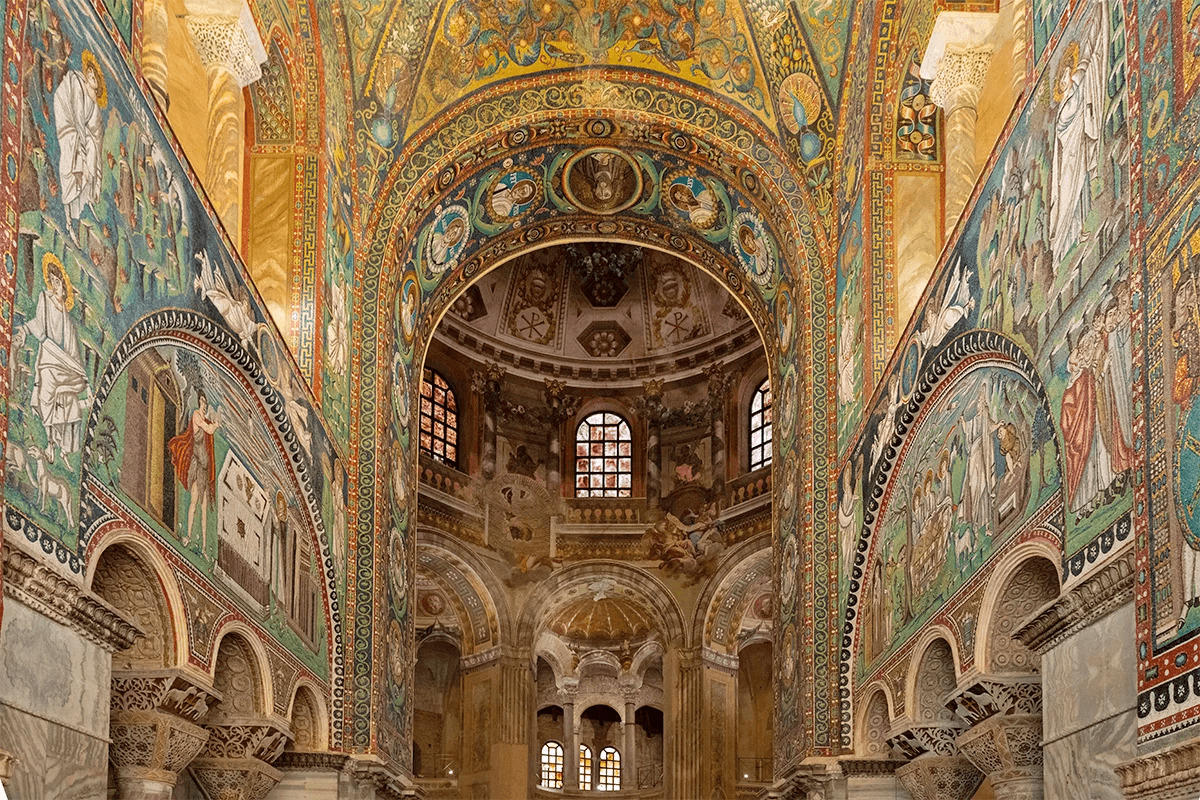If you want to see up close the real essence of mosaic in Ravenna, you cannot miss the BASILICA OF SAN VITALE, UNESCO World Heritage monument since 1996 and one of the most important monuments of early Christian art in Italy and in the world.
It is located in the heart of Ravenna, a few steps from some of the most suggestive monuments of the old town, such as the Mausoleum of Galla Placidia, the Domus of the Stone Carpets, the National Museum and many others.
The basilica was built to witness the greatness of the Byzantine Empire, especially of the Justinian era.
It stands out for the magnificence of its decorations and materials – not to mention the unusual spatial organization that recall the Church of Saints Sergio and Bacco in Constantinople.
At the origins of the Basilica
The basilica was commissioned during the Gothic kingdom, in the years of Bishop Ecclesius (525-526 AD). Thanks to the considerable sum of 26 thousand gold coins allocated by banker Giuliano Argentario, the basilica was ended just 20 years later, during Justinian’s rule.
It was consecrated by Archbishop Maximian in 547 AD to St. Vitale, a martyr of the first centuries of Christianity.
Apparently, this place was chosen for a very precise reason. As a matter of fact, legend has it that in this place was found a sacellum dating back to the 5th century with the remains of Saint Vitale.
Besides tradition, what is certain is that the basilica was built in a very favourable position. Rising just outside the city walls of Roman age, it was surrounded by stately domus.
Moreover, it was close to other very prestigious sites, such as the Basilica of Santa Croce and the Mausoleum of Galla Placidia.
An “unusual” architecture
The basilica is composed of a central plan, and it features structural elements that clearly differentiate it from any other church with a basilica plan.
The building develops in two brick-built prismatic blocks, a higher one and alower one, both with an octagonal plan. Around the tambour of the central dome is a two-storey ambulatory (corridor) with a women’s gallery (matroneo).
Looking eastwards, the polygonal apse is flanked by two rectangular sacristies. On the opposite side, the entrance portico (narthex), oddly set aslant the apse, has two exedras, one on each side, which lead to the two towers and to the upper sectors.
The inner decoration
As soon as you enter the basilica, your gaze is immediately captured by the amazing mosaic decorations in the apse and the vast open spaces, not to mention the imposing central vault, frescoed in the 18th century.
It’s quite impossible to embrace the whole space with one look. As soon as it meets the mosaic decorations and the marble surfaces, the light seeping through the windows creates extraordinary suggestive effects.
The interior, above the precious marbles, is a further source of wonder – you can see a splendid example of mural mosaic that develops vertically, conferring to the basilica an imperial aura and representing the political and religious power of the time.
While the mosaic figures from the episodes of the Old and the New Testament in the presbytery appear plastic and in a worldly setting, the figures in the apse (Emperors Theodoric and Justinian and Archbishop Maximian) stand out hieratically on a golden, almost abstract, background, as to deepen our sense of the transcendent and metaphysical power of the Church as well as the dogmatic and political force of Justinian’s religious conception.
Besides all that, do not miss the representation of a circular labyrinth entirely made of marble in the area of the presbytery, just in front of the altar. Finding one’s way out is meant to be an act of rebirth.

